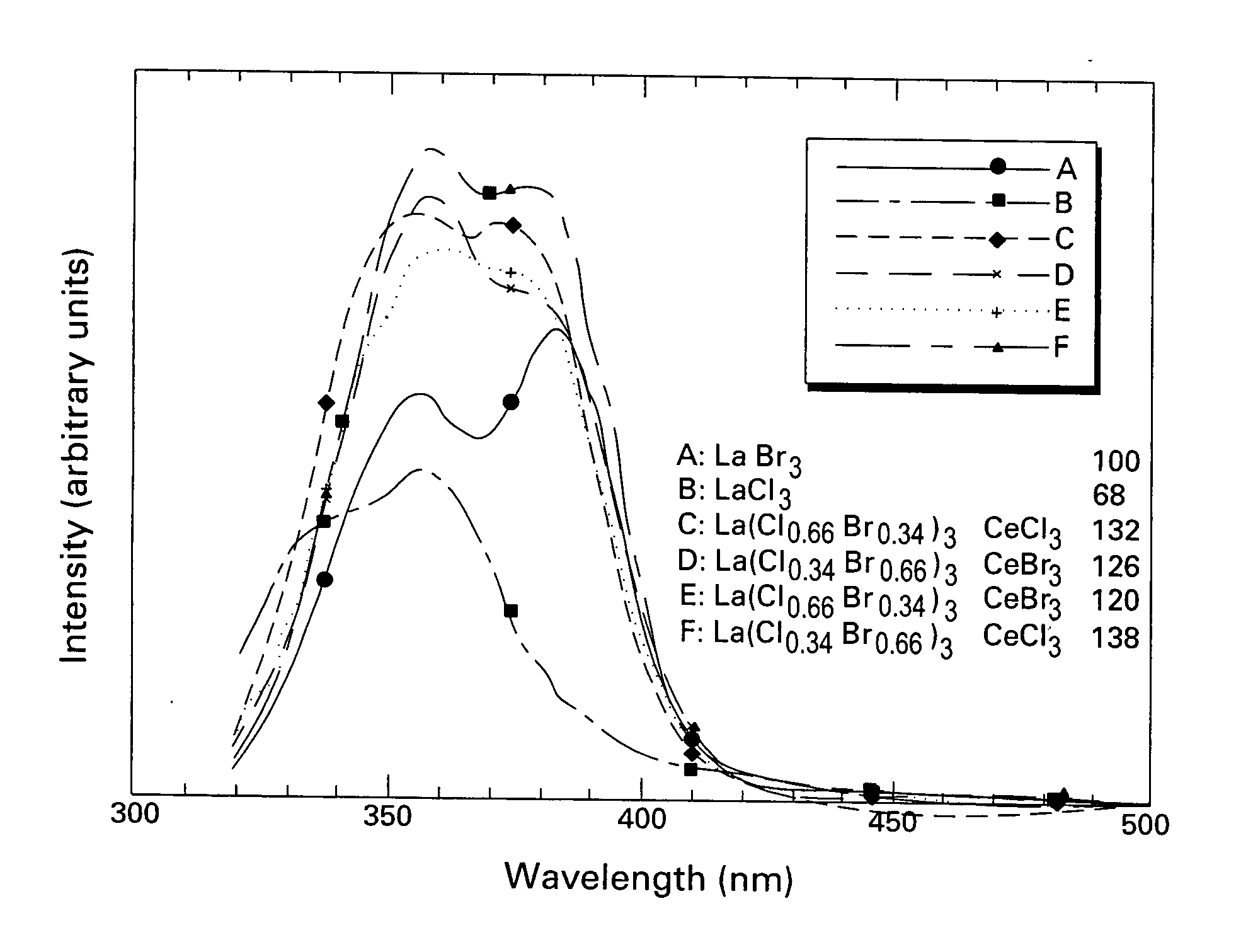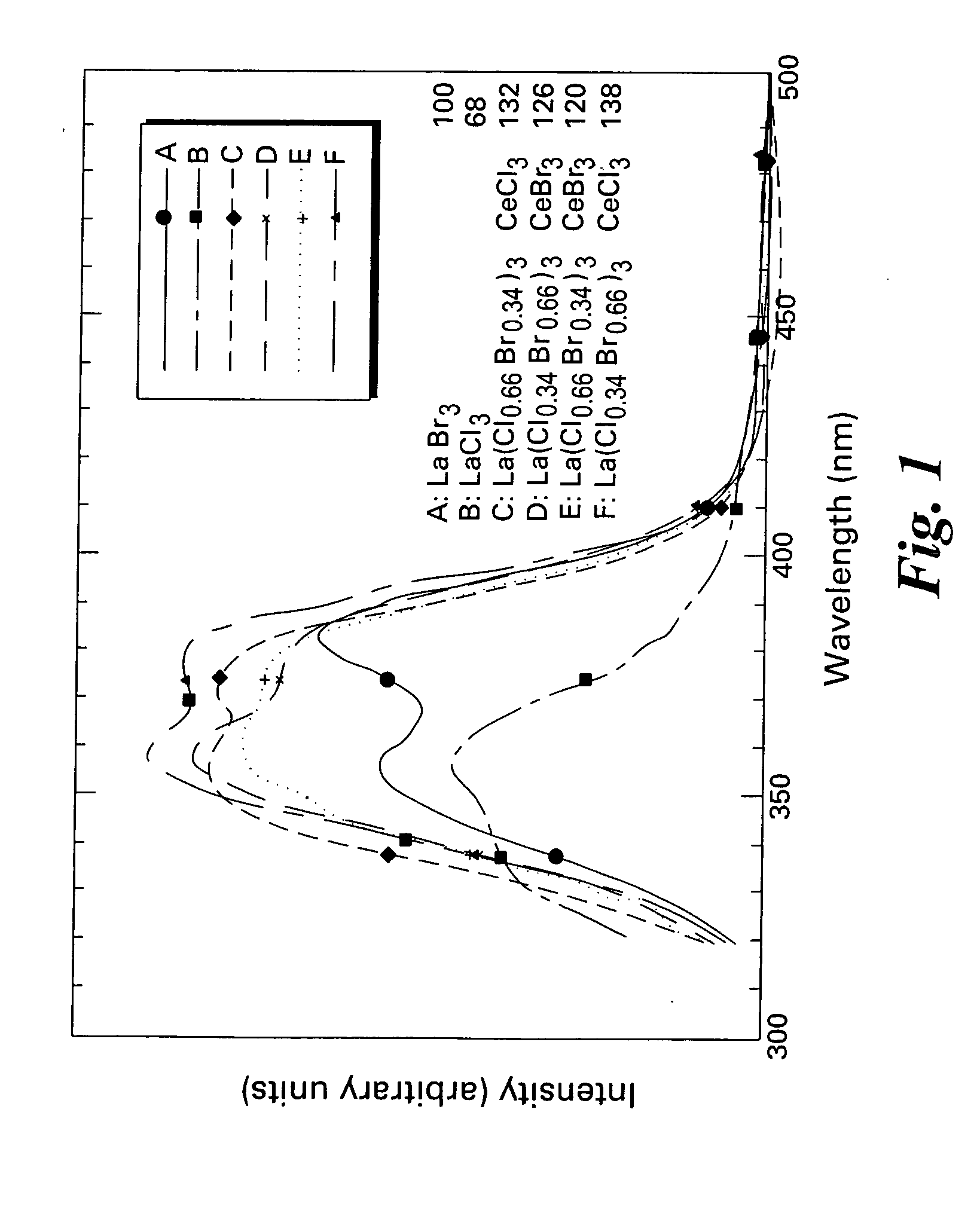Scintillator compositions, and related processes and articles of manufacture
a technology of compositions and scintillators, applied in the field of scintillator compositions, can solve the problems of affecting the intensity-counting system, affecting the detection effect of ionizing radiation, and affecting the detection effect of ionizing radiation, and achieve the effect of improving the properties of various properties
- Summary
- Abstract
- Description
- Claims
- Application Information
AI Technical Summary
Benefits of technology
Problems solved by technology
Method used
Image
Examples
example 1
[0061] The example which follows is merely illustrative, and should not be construed to be any sort of limitation on the scope of the claimed invention.
[0062] Six scintillator samples were examined for light output analysis. Sample A was lanthanum bromide (LaBr3), obtained from a commercial source. Sample B was lanthanum chloride (LaCl3), obtained in the same manner. Each of these samples served as controls.
[0063] Sample C was a composition within the scope of the present invention. The composition was a cerium-activated solid solution of lanthanum chloride and lanthanum bromide. The composition was prepared by dry mixing cerium chloride with lanthanum chloride and lanthanum bromide. (All materials were commercially-obtained.) Mixing was carried out in an agate mortar and pestle. The uniform mixture was then transferred to an aluminum crucible, and fired at a temperature of about 600° C. The heating atmosphere was a mixture of 0.5% hydrogen and 99.5% nitrogen. The final molar rati...
example 2
[0068] The example which follows is merely illustrative, and should not be construed to be any sort of limitation on the scope of the claimed invention.
[0069] Five scintillator samples were examined for light output analysis. Sample A was lanthanum bromide (LaBr3), obtained from a commercial source. This sample served as a control. It is noted that while the control sample A, and the below described samples B, C, D and E did not include other lanthanide halides, or activators other than cerium, the invention encompasses any of the above described scintillator compositions with the addition of bismuth or other elements or compounds that may enhance the efficiency of the scintillator composition.
[0070] Sample B was a composition within the scope of the present invention. The composition was a cerium-activated and bismuth-doped solid solution of lanthanum bromide. The composition was prepared by dry mixing cerium bromide and bismuth bromide with lanthanum bromide. (All materials were...
PUM
| Property | Measurement | Unit |
|---|---|---|
| energy | aaaaa | aaaaa |
| decay time | aaaaa | aaaaa |
| density | aaaaa | aaaaa |
Abstract
Description
Claims
Application Information
 Login to View More
Login to View More - R&D
- Intellectual Property
- Life Sciences
- Materials
- Tech Scout
- Unparalleled Data Quality
- Higher Quality Content
- 60% Fewer Hallucinations
Browse by: Latest US Patents, China's latest patents, Technical Efficacy Thesaurus, Application Domain, Technology Topic, Popular Technical Reports.
© 2025 PatSnap. All rights reserved.Legal|Privacy policy|Modern Slavery Act Transparency Statement|Sitemap|About US| Contact US: help@patsnap.com



